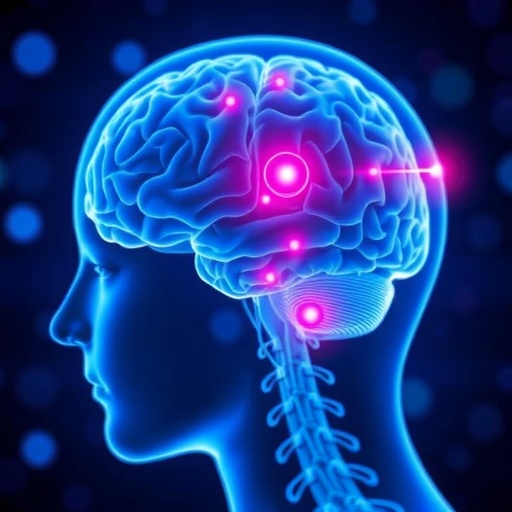In a groundbreaking and comprehensive study published in Translational Psychiatry, researchers have unveiled the profound and long-lasting effects of deep brain stimulation (DBS) targeting the nucleus accumbens (NAc) and the anterior limb of the internal capsule (ALIC) on patients suffering from heroin addiction. This pioneering prospective open-label pilot study meticulously tracked patients over an extraordinary span of more than five years, offering unprecedented insight into the durability and efficacy of DBS as a therapeutic intervention for one of the most challenging substance use disorders worldwide. The implications of these findings extend beyond addiction treatment, potentially reshaping neuropsychiatric therapeutic paradigms.
Heroin addiction remains a devastating global health crisis, marked by alarmingly high rates of relapse and limited effective treatment options. Traditional pharmacological and behavioral therapies have yielded inconsistent outcomes, often failing to address the deep neurocircuitry disruptions that underpin addictive behaviors. This study centers on a novel neuromodulatory approach, employing DBS to modulate specific neural circuits implicated in reward and compulsive behaviors. The nucleus accumbens, a key node within the brain’s reward pathway, and the anterior limb of the internal capsule, a white matter tract connecting prefrontal and subcortical regions, are strategically targeted to restore neural regulation disrupted by addiction.
The researchers enrolled a carefully selected cohort of patients with treatment-resistant heroin addiction, all of whom had relapsed despite multiple conventional therapies. DBS electrodes were surgically implanted with precision into both the NAc and ALIC, enabling chronic stimulation adjustable to individual patient needs. The surgical procedure was optimized through advanced neuroimaging and stereotactic techniques, ensuring maximum accuracy and minimal adverse effects. Initial postoperative evaluations assessed safety and acute physiological responses, confirming the tolerability of DBS in this vulnerable population.
Throughout the extensive follow-up period, which extends over five years, the study meticulously monitored a wide array of clinical parameters, including relapse frequency, craving intensity, psychiatric comorbidities, and quality of life indices. Remarkably, the cohort demonstrated sustained reductions in heroin cravings and use, a finding that contrasts starkly with the typical trajectory of addiction relapse. The capacity of DBS to induce durable neuroplastic changes is highlighted by the consistent amelioration of symptoms well beyond initial treatment phases, suggesting underlying modifications in neuronal circuits responsible for compulsive drug seeking.
This unprecedented duration of follow-up offers an invaluable window into the long-term neural adaptation induced by DBS. The persistent therapeutic effects observed indicate that stimulation of the NAc and ALIC interrupts pathological reward processing and restores functional connectivity within cortico-striatal-thalamic loops. Such mechanistic insights align with emerging theories positing addiction as a network-level disorder, where maladaptive plasticity perpetuates drug-seeking behaviors. Therefore, targeting these critical nodes yields a neurobiological reset that curbs the pathological reinforcement cycle.
Importantly, the study also provides comprehensive safety data, detailing the absence of significant adverse neurological or psychiatric events associated with chronic DBS. Sustained stimulation did not result in cognitive decline, mood deterioration, or other deleterious effects, underscoring the feasibility of this intervention as a long-term treatment strategy. This safety profile is particularly significant given concerns about invasive brain procedures and their potential risks, thereby substantiating DBS as a viable clinical option.
The open-label design, while lacking the blinding of randomized controlled trials, offers a pragmatic perspective on real-world applicability. Patient-reported outcomes and clinician assessments converge to validate the clinical benefits observed. Furthermore, the study highlights the importance of individualized stimulation parameter optimization to maximize therapeutic efficacy, emphasizing the role of neuroengineering advances and personalized medicine approaches in neuromodulation therapies.
The neurophysiological data derived from electrophysiological recordings and imaging studies contribute crucial understanding regarding modulation of aberrant activity patterns. DBS-induced alterations in local field potentials and functional connectivity metrics paralleled clinical improvements, suggesting that these biomarkers could serve as predictive indicators of treatment responsiveness. Such integrative multimodal assessment represents a critical advancement in refining DBS protocols and tailoring interventions to neurobiological signatures.
Moreover, this investigation situates DBS within the broader framework of addiction neurobiology, advocating for a shift from solely behavioral and pharmacological treatments towards circuit-level interventions. By directly influencing neural substrates driving compulsive drug use, DBS exemplifies precision neuroscience, potentially harmonizing with emerging modalities like closed-loop stimulation and real-time neurofeedback. The study’s insights pave the way for multidisciplinary approaches that integrate neurosurgery, psychiatry, and neuroengineering.
The societal implications are profound, offering hope for patients trapped in the cycle of heroin addiction resistant to current treatments. Prolonged remission facilitated by DBS could alleviate personal suffering, reduce healthcare burdens, and mitigate socio-economic costs associated with opioid addiction. As the opioid crisis continues to escalate globally, technological innovations such as DBS represent a frontier in addiction medicine with transformative potential.
Future research directions organically arise from these findings, including controlled randomized studies with larger cohorts to validate efficacy, explore optimal stimulation parameters, and examine applicability across diverse substance use disorders. Additionally, mechanistic explorations into DBS-induced neuroplasticity promise to deepen our understanding of brain recovery processes, informing enhancements in neuromodulatory therapeutics.
In conclusion, this landmark prospective pilot study marks a significant leap forward in the fight against heroin addiction by demonstrating sustained clinical benefits of DBS targeting the nucleus accumbens and anterior limb of the internal capsule over an unprecedented follow-up period exceeding five years. By bridging clinical neuroscience with innovative neuromodulation techniques, the researchers have illuminated a promising avenue that could revolutionize addiction treatment paradigms, offering renewed hope to countless individuals battling this devastating disorder.
Subject of Research:
Article Title:
Article References:
Ge, S., Wang, X., Chen, L. et al. Effects of deep brain stimulation of the nucleus accumbens and anterior limb of the internal capsule on heroin addiction: Over five years of long-term follow-up in a prospective open-label pilot study. Transl Psychiatry 15, 415 (2025). https://doi.org/10.1038/s41398-025-03635-6
Image Credits: AI Generated
DOI: https://doi.org/10.1038/s41398-025-03635-6
Keywords:




